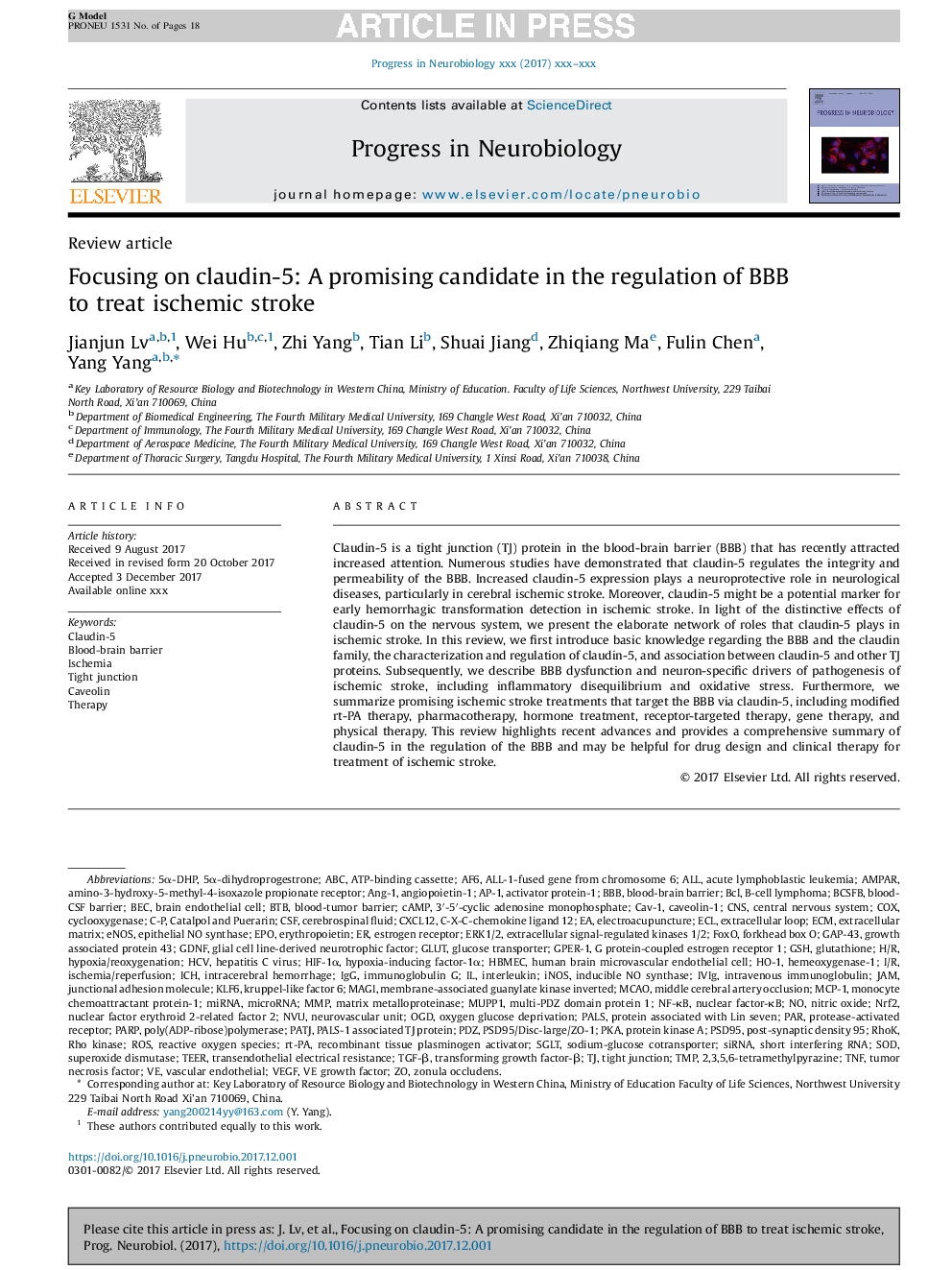| Article ID | Journal | Published Year | Pages | File Type |
|---|---|---|---|---|
| 8842194 | Progress in Neurobiology | 2018 | 18 Pages |
Abstract
Claudin-5 is a tight junction (TJ) protein in the blood-brain barrier (BBB) that has recently attracted increased attention. Numerous studies have demonstrated that claudin-5 regulates the integrity and permeability of the BBB. Increased claudin-5 expression plays a neuroprotective role in neurological diseases, particularly in cerebral ischemic stroke. Moreover, claudin-5 might be a potential marker for early hemorrhagic transformation detection in ischemic stroke. In light of the distinctive effects of claudin-5 on the nervous system, we present the elaborate network of roles that claudin-5 plays in ischemic stroke. In this review, we first introduce basic knowledge regarding the BBB and the claudin family, the characterization and regulation of claudin-5, and association between claudin-5 and other TJ proteins. Subsequently, we describe BBB dysfunction and neuron-specific drivers of pathogenesis of ischemic stroke, including inflammatory disequilibrium and oxidative stress. Furthermore, we summarize promising ischemic stroke treatments that target the BBB via claudin-5, including modified rt-PA therapy, pharmacotherapy, hormone treatment, receptor-targeted therapy, gene therapy, and physical therapy. This review highlights recent advances and provides a comprehensive summary of claudin-5 in the regulation of the BBB and may be helpful for drug design and clinical therapy for treatment of ischemic stroke.
Keywords
ECMABCNF-κBMMPCOXIgGBECTMPNrf2GSHHO-1EPOangiopoietin-1iNOSMCP-1eNOSAMPARpKaECLOGDGDNFMCAOAP-1HIF-1α5α-DHPHBMECSGLTBclPDZPARPNVUBCSFBTEERGPER-1PSD95GAP-43GLUTCXCL12IVIgBTBKLF6C-PHemeoxygenase-1post-synaptic density 95G protein-coupled estrogen receptor 1MUPP1PATJTNFTGF-β3′-5′-cyclic adenosine monophosphatecAMPERK1/2H/RI/Rinducible NO synthaseshort interfering RNAROSrt-PAsiRNAAng-1cyclooxygenaseTight junctionerythropoietinElectroacupuncturevascular endothelialmiddle cerebral artery occlusionIschemiaischemia/reperfusionimmunoglobulin GinterleukinIntravenous immunoglobulintransforming growth factor-βParforkhead Box Oextracellular loopGlucose transporterintracerebral hemorrhageTherapyCNSgrowth associated protein 43Rho kinaseSODBBBHuman brain microvascular endothelial cellbrain endothelial cellSuperoxide dismutasecentral nervous systemzonula occludensKrüppel-like factor 6Vascular Endothelial Growth Factor (VEGF)Glial cell line-derived neurotrophic factortumor necrosis factornuclear factor-κBnuclear factor erythroid 2-related factor 2FoxORecombinant tissue plasminogen activatorB-cell lymphomaAcute lymphoblastic leukemiaExtracellular matrixmatrix metalloproteinaseblood-CSF barrierBlood-tumor barrierBlood-brain barrierCerebrospinal fluidCSFOxygen glucose deprivationJAMtransendothelial electrical resistanceICHjunctional adhesion moleculeMAGIMicroRNAMiRNANitric oxideALLHCVHepatitis C virushypoxia/reoxygenationneurovascular unitPALSmonocyte chemoattractant protein-1activator protein-1protein kinase Apoly(ADP-ribose)polymerasecaveolin-1Cav-1Claudin-5CaveolinATP-binding cassetteExtracellular signal-regulated kinases 1/2GlutathioneReactive oxygen speciesEstrogen receptorprotease-activated receptor
Related Topics
Life Sciences
Neuroscience
Neuroscience (General)
Authors
Jianjun Lv, Wei Hu, Zhi Yang, Tian Li, Shuai Jiang, Zhiqiang Ma, Fulin Chen, Yang Yang,
